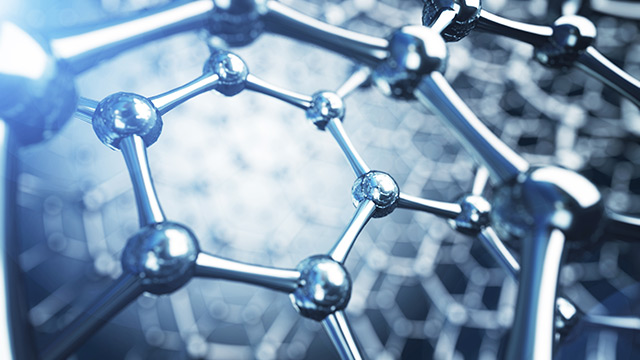
This is really interesting. the complex working archetecture produces harvestable electric current. This means ultimately a future lap top not needing external power at all.
Turns out the working diodes stimulate the graphene substrate they are on to produce power output released by simple Brownian motion.
We used to worry about heat mangement..
.
Physicists build “energy harvesting” circuit from graphene
Monday, October 12, 2020 by: Franz Walker
Tags: battery, breakthrough, discoveries, electricity, electronics, future science, future tech, goodscience, goodtech, Graphene, innovation, inventions, physics, power, research
https://www.naturalnews.com/2020-10-12-physicists-build-energy-harvesting-circuit-from-graphene.html

(Natural News) A team of physicists from the University of Arkansas (U of A) has successfully developed graphene-based circuits capable of providing nearly limitless power for small devices.
Described in a paper published in the journal Physical Review E, the findings prove a theory the physicists developed at the U of A three yeas ago. This theory stated that freestanding graphene – a single layer of carbon atoms – ripples and buckles in a way that holds promise for energy harvesting.
“An energy-harvesting circuit based on graphene could be incorporated into a chip to provide clean, limitless, low-voltage power for small devices or sensors,” said lead researcher Paul Thibado.
Controversial study challenges existing ideas
The research conducted by the U of A scientists has been rather controversial. The idea that freestanding graphene has potential energy-harvesting capabilities refutes a well-known assertation by physicist Richard Feynman that the thermal motion of atoms, known as Brownian motion, cannot do work.
However, the U of A researchers found that at room temperature, the thermal motion of graphene does induce an alternating current in a circuit – something previously thought impossible. In addition, the researchers found that their design increased the amount of power delivered. They stated that they found that the diodes’ switch-like behavior actually amplified the power being delivered instead of reducing it.
“We also found that the on-off, switch-like behavior of the diodes actually amplifies the power delivered, rather than reducing it, as previously thought,” said Thibado. “The rate of change in resistance provided by the diodes adds an extra factor to the power.”
To prove that the diodes increased the circuit’s power, the scientists on the project used a relatively new field of physics called stochastic thermodynamics. This field uses a family of stochastic or random variables to better understand the non-equilibrium dynamics present in many microscopic systems.
In the case of the graphene, the researchers say that it shares a symbiotic relationship with the circuit. While the thermal environment performs work on the load resistor, the circuit and the graphene at the same temperature and heat are not flowing between the two. This is an important discovery as a temperature difference between the two would violate the second law of thermodynamics.
Low-power graphene chips could power electronics in lieu of batteries
As part of their research, the scientists also found that the relatively slow motion of the graphene induces a current in the circuit at low frequencies. This is important from a technological perspective because electronics function much more efficiently at low frequencies.
“People may think that current flowing in a resistor causes it to heat up, but the Brownian current does not. In fact, if no current was flowing, the resistor would cool down,” Thibado explained. “What we did was reroute the current in the circuit and transform it into something useful.”
Before the technology can be used in practical applications in electronics, some more research needs to be done. For the next step, the team is looking to determine with the direct current from the circuit can be stored in a capacitor for later use. This, however, requires that the circuit be miniaturized so that it can be patterned on a silicon wafer or chip.
According to the researchers, should they succeed in doing this, millions of these tiny circuits could be built on a 1-millimeter by 1-millimeter chip which could then serve as a low-power battery replacement.
For more oh graphene and its possible applications, follow FutureScienceNews.com.
Sources include:
No comments:
Post a Comment